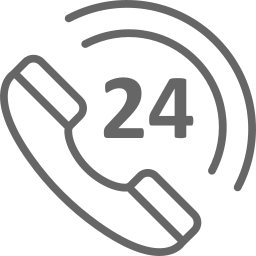A.1. Medical terminology is a term used to characterize the human body accurately, along with its elements, mechanisms, factors impacting the body, and the methods employed thereon. It is used by doctors and nurses to describe body-related processes and materials, illnesses, conditions, medications, pharmacology, and other healthcare-related procedures (Cohen & Jones, 2020). To all the individuals involved in a patient's care process, proper interpretation of medical terms is very critical. Medical terminology services are useful for patients, care professionals, or other individuals who are worried about learning a great deal about various medical conditions, symptoms, and procedures. Many of the prevalent tools and services used in health care organizations for medical terminology are:
A.2. Hypotension (hy·po·ten·sion): Low blood pressure (less than 120/80) is hypotensive. Along with each pulse, blood presses into the arteries. And blood flowing against the walls of the artery is called blood pressure.
Hypertension (hy·per·ten·sion): it is also defined as high blood pressure, is a long-term medical disorder that persistently elevates the blood pressure in the arteries.
Outpatient (out·pa·tient): Individuals with health problems who have access to the medical facility for treatment or diagnosis, but who do not need a bed during that time, or are hospitalized for further treatment.
Inpatient (in·pa·tient): Caring for patients whose condition requires hospital admission.
Angina (an·gi·na): It is chest pain or discomfort arising from not having adequate oxygen-rich blood in the heart muscle. This can feel like tension or pressure in the chest.
Edema (ede·ma ): The medical term for swelling is edema. Sections of the body expand from injuries or swelling. It can affect a small region, or the whole body. It occurs when the tiny blood vessels spill fluid into tissues nearby.
Biposy (bi·op·sy): It is a specimen of a tissue collected from the patient to be further investigated.
Membrane (mem·brane): Thin layer of folding tissue that acts as protection or covering or link among two structures.
sutures (su·ture): Doctor use sutures to close cuts on skin or some other tissue. When a wound is sutured by your doctor, they use a needle fixed to a "thread" length to stitch the wound shut.
Fracture (frac·ture): A fracture is a broken bone site.
A.3. The health care professional should always be aware of the significance of clear communication when prescribing, supplying, and providing medicines, and when recording information on medicinal items. Some various policies and programs encourage the safety of patients by using clear and precise medicine information communication based on the Commission's 'Terminology Recommendations, Abbreviations, and Symbols used in medication documentation.
The principles for healthy, simple, and coherent medicinal terminology (ACQHS, 2016).
Scenario 1.
New Patient Appointment Letter
Stanford Orthopaedic Centre
Date: 07/09/2020 Blake Wilbur Building
Wilbur drive 3rd floor
Stanford
Phone: 0987654321
Fax: 9878787878
center.orthopaedic.edu/new patient
Dear, Jim Palmer
DOB: 26/09/1942
Patient’s MRN: CDG185
You are scheduled for an appointment with the Stanford Orthopaedic Centre.
My name is Mary Johnson, I'll help you get ready for your first appointment with us, as one of the patient coordinators. If you need to cancel or modify your meetings please contact us by calling 0987654321 at least 24 hours in advance. Please schedule your meet up for one to two hours.
Your appointment is scheduled for:
Date: 09/09/2020
Time: 11 am
Name of doctor: Dr. Shane Grady
Address: With Please check-in at Stanford Orthopaedic Centre,
Blake Wilbur Building, Wilbur drive 3rd floor
(Please arrive 15 minutes before your appointment time)
Please bring the following with you for the appointment
o Identity card
o Medicare card
o Previous X-rays and other medical information related to your fracture.
Scenario 2.
A.1. Radiating pain: Radiating pain is when the extreme pain when arises is concentrated in a region while the pain appears in the other organ or body part. Strain or sprain in the upper back, for example, may cause radiating chest pain.
Chest pain: The chest pain gives the following conditions: tension, heaviness, burning, or tightness to the chest. Back, collar, chest, forearms, or one or both of the arms refract discomfort.
HR: The heart rate is usually defined as BPM, i.e. beats per minute. The heart beats to deliver the oxygenated, clear blood from the left heart ventricle through the aorta to the blood vessel of the body.
ECG: Electrocardiogram provides a graph that is obtained between voltage and time by placing electrodes on the skin that indicate electrical activity or signals of the heart. The electrodes positioned on the surface detect the small to significant changes in the electronic signal which occurs from the depolarization of the cardiac muscle in each heartbeat to repolarization (Celik et al., 2016).
Blood pressure cuff: A blood pressure cuff is used for soaking up blood pressure. The belt, with an inflatable rubber bladder, is fastened around the hand. A pressure meter on the cuff shows the strain. A small, portable air pump is inflated to the blood pressure cuff. Using a stethoscope to listen to the noise from the pumping of arterial blood, as discomfort is minimized (Sheshadri et al., 2017).
Hudson mask: Hudson mask or plain face mask are the instruments most widely used for oxygen supply.
BP: Blood pressure is indicated as BP, and is characterized as blood pressure on blood vessel walls, particularly in arteries.
A.2. Successful treatment and control of chest pain patients is key to any plan for reducing the burden of coronary illness. First, present alive, the vast majority of patients can be identified with a clear history and a step-by-step program of properly requested, administered, and understood investigation. The elements of this process can be conducted in any general district hospital, and most of it can be done by properly qualified nursing and non-consultant grade personnel (George et al., 2017). Signs and symptoms of chest pain are identified in the emergency room at the hospital. Acute and chronic chest pain puts tremendous pressure on the healthcare system. The ACSQHC has prepared a standard guideline for managing chest pain in the patients. The guidelines include working with a broad mix of people including the heart surgeon, GP, pathologist, doctors, cardiac nurses, and cardiologists. The policy includes recommendations graded on the strength of evidence-based interventions and the expected value (Blichfeldt-Eckhardt et al., 2018). The patient needs to be an integral guide to the chest pain assessments for troponin testing. The cardiac monitoring is continuous. There is also provision for prompt transfer and early and timely invasive management of patients receiving fibrinolysis. When required, the patient may undergo antiplatelet and anti-thrombin therapy. Patients are administered oxygen supplementation and aspirin therapy, depending on the severity of pain (Roche et al., 2017). The patient's discharge is managed and the patient and caregiver should be referred to prevention and intervention according to personal preferences, individual values, and the available resources.
I would ask the supervisor nurse, the nurse unit manager, the doctor to seek medical clarification because medical professionals such as doctors, practical managers generally use the list containing abbreviations, phrases, and different medical terminology to search quickly and accurately record the information and also instruct patients accordingly.
A.4. I would report patient details at the time of paramedics arrival as
Patient Name- Ray Berry
Age- 53 years old
The vital signs include Heartbeat-102 bpm and BP -112/63 hg mm.
The patient arrived and complained about 6/10 intense chest pain that radiated to his left arm and received Hudson mask administration of 6 L of oxygen as he faced breathing problems. The patient is tracked every 10 minutes and electronically records his blood pressure.
ACQHS. ( 2016). Recommendations for terminology, abbreviations, and symbols used in medicines documentation – Summary sheet. Retrieved from https://www.safetyandquality.gov.au/sites/default/files/migrated/Recommendations-for-terminology-abbreviations-and-symbols-used-in-medicines-documentation-Summary-sheet-December-2016.pdf
Benson, T. & Grieve, G. (2016). Principles of health interoperability: SNOMED CT, HL7, and FHIR. Springer.
Blichfeldt-Eckhardt, M. R., Andersen, C., Ørding, H., Licht, P. B. & Toft, P. (2018). From acute to chronic pain after thoracic surgery: The significance of different components of the acute pain response. Journal of Pain Research, 11, 1541.
Bodenreider, O., Cornet, R. & Vreeman, D. J. (2018). Recent developments in clinical terminologies—SNOMED CT, LOINC, and RxNorm. Yearbook of Medical Informatics, 27(1), 129.
Celik, N., Manivannan, N., Strudwick, A., & Balachandran, W. (2016). Graphene-enabled electrodes for electrocardiogram monitoring. Nanomaterials, 6(9), 156.
Clunie, D., Hosseinzadeh, D., Wintell, M., De Mena, D., Lajara, N., Garcia-Rojo, M., ... & Abels, E. (2018). Digital imaging and communications in medicine whole slide imaging connection at digital pathology association pathology visions 2017. Journal of Pathology Informatics, 9.
Cohen, B. J., & a Jones, S. (2020). Medical Terminology 9 (Us Ed). Jones & Bartlett Publishers.
George, N., Abdallah, J., Maradey?Romero, C., Gerson, L., & Fass, R. (2016). The current treatment of non?cardiac chest pain. Alimentary Pharmacology & Therapeutics, 43(2), 213-239.
Roche, T. E., Gardner, G., & Jack, L. (2017). The effectiveness of emergency nurse practitioner service in the management of patients presenting to rural hospitals with chest pain: A multisite prospective longitudinal nested cohort study. BMC Health Services Research, 17(1), 445.
Sheshadri, V., Tiwari, A. K., Nagappa, M., & Venkatraghavan, L. (2017). Accuracy in blood pressure monitoring: the effect of noninvasive blood pressure cuff inflation on intra-arterial blood pressure values. Anesthesia, Essays and Researches, 11(1), 169.
Woodham, P. B., & Vaitsis, C. (2017). MEDCIN.
Remember, at the center of any academic work, lies clarity and evidence. Should you need further assistance, do look up to our Nursing Assignment Help
Related Content
Top Universities in Perth for Nursing Course
Reliable Mental Health Nursing Assignment Assistance

Get 24x7 instant assistance whenever you need.

Get affordable prices for your every assignment.

Assure you to deliver the assignment before the deadline

Get Plagiarism and AI content free Assignment

Get direct communication with experts immediately.
Secure Your Assignments
Just $10
Pay the rest on delivery*

It's Time To Find The Right Expert to Prepare Your Assignment!
Do not let assignment submission deadlines stress you out. Explore our professional assignment writing services with competitive rates today!
Secure Your Assignment!